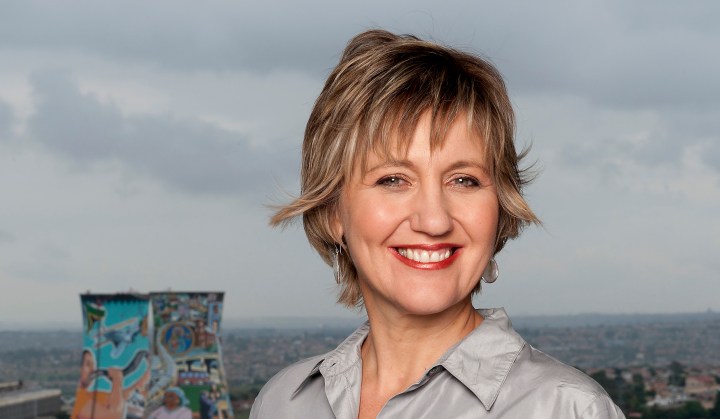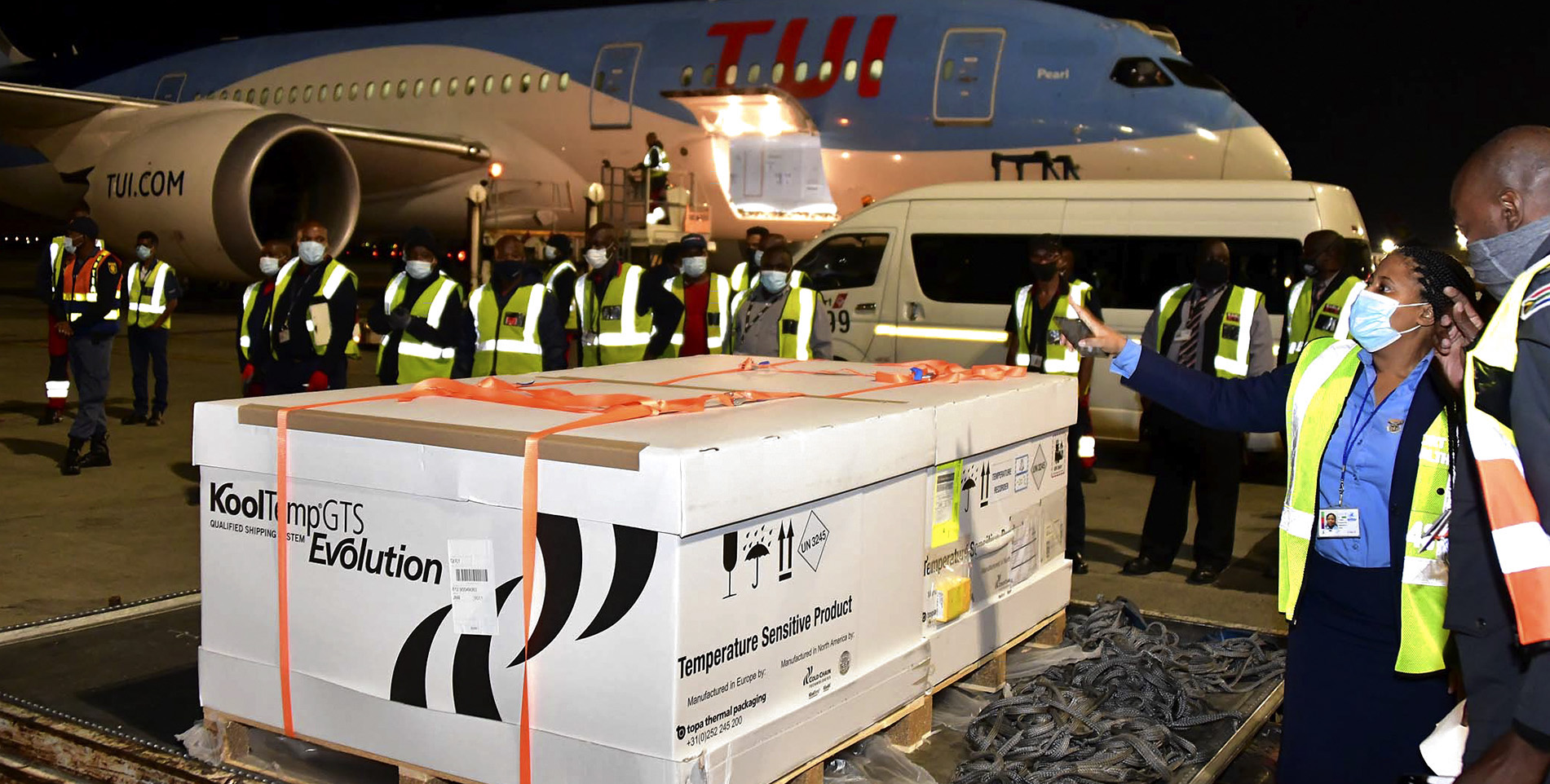SPOTLIGHT
Behind the scenes: How the first 500,000 vaccine doses administered in SA were secured

When South Africa’s rollout of the AstraZeneca vaccine was put on hold in early February, a scramble ensued to ensure healthcare workers could be protected. Spotlight spoke to Professor Glenda Gray about the behind-the-scenes negotiations that helped secure 500,000 doses of the Johnson & Johnson vaccine — almost all of which have now been used in the Sisonke study.
On 1 February 2021, a million doses of the Oxford/AstraZeneca Covid-19 vaccine produced by the Serum Institute of India arrived at OR Tambo International Airport. Everything seemed set for the country’s vaccine rollout to kick off two or so weeks later.
But just a few days later on 7 February, the devastating news came that a study found the Oxford/AstraZeneca vaccine offered little or no protection against mild-to-moderate Covid-19 caused by the variant of SARS-CoV-2 prevalent in South Africa. Some argued that we should use the vaccine regardless since it might protect against severe disease and death, but the decision was taken not to use it and the vaccines were later sold.
With no other vaccines waiting in the wings, the country’s plans to start vaccinating healthcare workers seemed to be in tatters.
And yet, three months later, close to half a million healthcare workers in South Africa have been vaccinated in the Sisonke implementation study — in no small part due to the can-do attitude of Professor Glenda Gray, lead investigator of the study, President and CEO of the South African Medical Research Council (SAMRC).
Scrambling for vaccines
Faced with the shelved and expiring batch of Oxford/AstraZeneca vaccine doses and with just 14 days to replace them before the rollout to healthcare workers was due to start, Gray outlined SA’s dilemma to a key global colleague.
“I was chatting to (the US-based), Dr Larry Corey, a friend, and colleague with whom I was a co-principal investigator on the HIV vaccine trials network. I told him the AstraZeneca consignment won’t work on our healthcare workers,” she says.
Corey suggested she contact Johnson and Johnson’s (J&J’s), Belgium-based Chief Scientific Officer, Dr Paul Stoffels. Stoffels replied immediately to her email, promising to probe the global availability of spare clinical trial vaccine supplies. Gray mentioned this in a meeting with National Health Minister Dr Zweli Mkhize, who responded with enthusiasm, saying he would support her in any way his department could.

Nurse Zoliswa Gidi-Dyosi was the first healthcare worker in South Africa to receive the vaccine. (Photo: EPA-EFE / Gianluigi Guercia)
South Africa’s scientists have high standing globally, having led the world in game-changing paediatric and female HIV/Aids research, winning international respect, particularly in the tuberculosis and HIV fields. Covid-19 also recently claimed the lives of several top local and international researchers, adding sympathy to goodwill in the global scientific community. Many local healthcare workers are also known to have died of Covid-19. This almost certainly greased the wheels of what subsequently happened, Gray believes.
Stoffels began making calls to vaccine trial sites worldwide, trying to source spare stock, as Gray and Mkhize liaised with the two top US government officials, Dr Tony Fauci, chief medical adviser to president Joe Biden, and Biden’s chief scientific officer and Covid-19 vaccine programme chief, Dr David Kessler.
Gray said there was some furious to-ing and fro-ing over that early February fortnight between the co-owners of 200,000 vaccine trial doses — a US administration in the throes of presidential change, and J&J. She says her two presidential allies finally managed to secure authorisation for the release of the US-based doses while Stoffels secured the remaining 300,000 from sites elsewhere in the world for shipping to Belgium and Germany and then onward to SA.
“Around 5 and 6 February, vaccines were moved from all over the world to Belgium and Germany — every spare vial was tracked down in that week,” Gray recalls.
“Then when Joe Biden took over as president, we had to restart US negotiations. Luckily Fauci and Kessler were kept on, so they facilitated this. We had 14 days because our AstraZeneca consignment was in quarantine, but we pulled it off — and started the Sisonke trial only two days late,” says Gray.
She adds that the US Health Attaché in Pretoria, Dr Sophia Siddiqui, was instrumental in smoothing the acquisition of the new consignment, with the encouragement and help of Dr Mkhize’s department.
Debt of gratitude
Dr Stavros Nicolaou, leader of Business For South Africa’s Covid-19 team working with government, says the country owes Gray and her team, “a huge debt of gratitude”.
“Without them, we’d probably be sitting at the end of April not having vaccinated any of our healthcare workers. She was a great catalyst in why we were able to pivot so quickly,” he says.
Next steps
By 6:30pm on Saturday, 15 May, a total of 478,452 healthcare workers had been vaccinated in the Sisonke study. Mkhize said on Sunday that the remaining doses from the Sisonke study will be used in additional studies to be run by the SAMRC.
Gray says some extremely valuable sub-studies would be conducted. Speaking from the Eastern Cape at the weekend where she was fulfilling a promise to visit healthcare workers who had complained of being ‘neglected’ in the Sisonke rollout, Gray said these studies would centre on coagulation, breastfeeding, pregnant women, and HIV co-infected people.
“We want to understand the immune-based thrombosis, plus the safety of the vaccine in pregnant women better. Pregnant women beyond their first trimester can get shots with us from Monday,” she says.
Gray says Sisonke applied early on to the SA Health Products Regulatory Authority (Sahpra) for permission to include pregnant women past their first trimester for vaccination but after the vaccine-related thrombosis scare and pause, they were excluded. Top child and maternal health experts strongly recommend that women past their first trimester get vaccinated.
“We’ve now included them in the sub-study from Monday,” Gray says.
Rollout status
Some 700,000 healthcare workers in both the private and public sectors remain unvaccinated. From today, healthcare workers are being vaccinated as part of the country’s vaccine rollout, rather than through the Sisonke study. The vaccination of people over 60 also starts today.
Responding to suggestions that administrative barriers to South Africa’s impending biggest ever vaccination rollout should be removed, Gray said with a third Covid surge coming, the elderly had to be prioritised.
However, she agreed in broad principle that no vaccine vial should go to waste. “If there are no more elderly people at the end of the day and there are spare vials, they should use them on others and not follow the rule book.”

South Africa receives the first delivery of the Johnson & Johnson vaccine at OR Tambo International Airport in Gauteng. (Photo: GCIS)
The main thrust should be that every single Pfizer/BioNTech vaccine consignment now landing weekly at OR Tambo Airport (330,000 doses weekly until end-June when it ramps up to 630,000 per week), plus those from the Gqeberha J&J factory, should be used in the week supplies arrive at each vaccination site.
“For the next couple of months there’s a bottleneck, so we must ensure everything in the country is used. If there’s any surplus anywhere when each new batch arrives, then we’re not doing a good job. There’s a global shortage of these vaccines. Countries are suing manufacturers. We’ve chosen two very good ones, but there’s a big demand out there (globally). Others are far easier to come by,” she says.
Lessons from Sisonke
When asked what she saw as the biggest current Covid-19 vaccination challenge, she replies, “the confidence to go ahead and not be scared to make mistakes”.
“We all did in the beginning, but we keep learning. There’ll be mess-ups, but we must course-correct and learn.”
Sisonke taught her that South African clinicians and scientists in both sectors were “passionate people, willing to roll up their sleeves and do an extraordinary job”.
Her message to health care leaders? “Teams are important, as are trust and hard work. Make sure your team is willing to go all the way with you. This healthcare worker trial was hard. We basically flogged our people to the end — they were working long hours in clinically sterile research conditions, but they got into their cars each day and drove out to rural areas to deliver an amazing programme. When we stopped for the clotting probe, they itched to get back out there.”
Her top qualities for pandemic resilience?
“A thick skin and good friends. My team WhatsApp’d and called each other every day for emotional support — we kept each other going.”
She estimates having slept an average of five hours per night during the three-month campaign. DM/MC
This article was produced by Spotlight — health journalism in the public interest.
"Information pertaining to Covid-19, vaccines, how to control the spread of the virus and potential treatments is ever-changing. Under the South African Disaster Management Act Regulation 11(5)(c) it is prohibited to publish information through any medium with the intention to deceive people on government measures to address COVID-19. We are therefore disabling the comment section on this article in order to protect both the commenting member and ourselves from potential liability. Should you have additional information that you think we should know, please email [email protected]"



 Become an Insider
Become an Insider